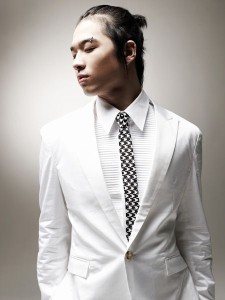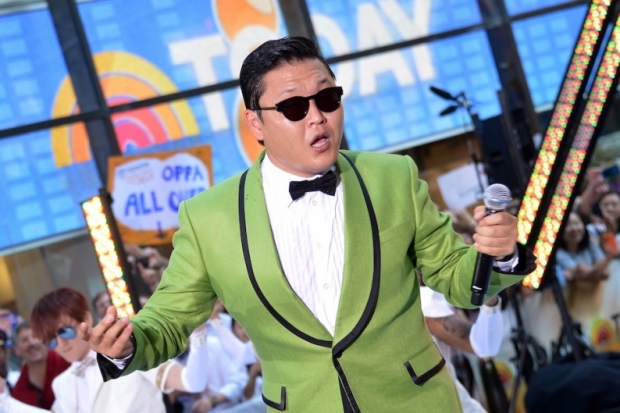On July 15th, 2012, a humorous music video of a well dressed cheesy looking man rapping in Korean, was uploaded to YouTube. As of right now, that video has accumulated over 300 million views and is the most “liked” video in YouTube history. If you have no idea what I am talking about, you are probably the last person with internet access to have seen this.
I am assuming that every publication out there has covered something about Psy, the internet sensation that is behind the “Gangnam Style” craze. Or at least broke down the actual music video and went into detail of what “Gangnam Style” really is. That is not what this article is about. Jackfroot would like to take a look into the reality behind this cultural phenomenon and discuss what it means for Asian Americans. How did Psy become so acceptable in Western culture and the world, whilst almost every other Asian artist who has attempted to make it here has had very limited success or failed trying?
In my own interpretation, Psy was a minor player in the K-Pop (Korean Pop) game, but made it here in America because he wasn’t even trying – really. This brilliant thirty-something year old artist, without the traditional image of an attractive Korean pop star, broke into America’s lucrative music market with a catchy and fun song. What makes this story so humbling, is the fact that it has a home audience truth to it. Psy didn’t make an English version of “Gangnam Style”, nor did he work with American producers or cameo high profile American artists to feature along side him in the music video. It was just him rapping, and his “dress classy, dance cheesy” presentation that won us over. That was it! The simplicity of “silly” broke Psy into the mainstream.
But has American mainstream media not seen an Asian Male in this role before? For many Asian people who have graced the silver screen, there is an underlying expectation that he or she must fit into in order to be deemed “acceptable” and make it – especially in Hollywood. There is a particular perception that all our brothers have higher chances of being casted to play butt-kicking martial artists or geeky computer nerds. But what are the acceptable roles for Asian artists? Apparently, there is a collective few who made an impression in mainstream American music by just being – silly. That being said, they were goofy, comical, and very non-threatening. Take for example, American Idol contestant and Korean American soulful singer, Heejun Han. Did the public really react to his singing skills, or mainly to his off-stage funny personality? Oh, and let’s not forget. Two words: William. Hung (his rise to fame was such a joke that I’m not even going to link him). The fact is, Psy fits into this unfortunate prescribed cultural stereotype of non-attractive, goofy, visually entertaining Asian male singer.

This takes into account what I am about to suggest: Psy’s popularity has less to do with his musical talents. What’s the issue here? Think of images of what are “acceptable” perceptions of Asian Americans in mainstream American media today. Why are talented, gorgeously attractive, and sexy International or Asian American pop stars receiving limited exposure and attention here? Most notable sexuality and presentation of desirability is almost unheard of or ever seen with Asian Americans in the media!  It’s interesting to note that these differences in perception may ultimately be the key factor to how Western media rejects or accepts Asian entertainers.
At the end of the day, was Psy’s success in America good or bad for the Asian community? I believe we just lost again here. See, not only is this “Gangnam Style” image going to be ingrained into the public consciousness as acceptable, but it also further denies the probability that other more traditional talents over seas may even make it here at the success levels that we have seen with Psy. His success further validates what American media want to see more of in Asian artists and singers. However, I do want to acknowledge that Western mainstream is slowly becoming more open to Asians. We are seeing more and more Asians in the spotlight. But what is unique about the Asian American Entertainment  Movement is that we fostered it within our own communities first. Far East Movement  is an example of this. The internet has really cultivated it’s own mainstream media. Asian Americans and young people in general, are using the power of the internet through social media, tweets, posts, vlogs, and blogs to deem what is acceptable and what is not. What is popular and what is not.
The good thing that may have come from all of this – is the power of sharing a feeling with others through the internet. Maybe this video made us laugh, feel happy, or even got us to get up and dance! Regardless of how long this craze may last, it sure put South Korea on the map.
Instead of the original, I decided to post this rendition music video instead. It features fellow Korean pop star, Hyuna (a member of Kpop girl group 4Minute). I absolutely adore it! Hope you will too! Enjoy!
[youtube id=”wcLNteez3c4″ width=”619″ height=”315″]
Subscribe to PSY’s YouTube Channel:Â http://www.youtube.com/user/officialpsy
Like PSY on Facebook:Â https://www.facebook.com/officialpsy
Today, “Gangnam Style” tops the iTunes charts, has produced a string of high-profile television appearances (ELLEN, SNL, VMAs), has inspired multiple upon multiple different parodies, ultimately impressing a young Bay Area couple enough to actually make it a part of their wedding music video! No need for me to get into why that even went viral – because it did!


